
Adisi Nukleofilik
Q1 What are Epimers with examples? Epimers are carbohydrates that differ in the location of the -OH group in one location. Both D-glucose and D-galactose are the best examples. D-glucose and D-galactose epimers create a single difference at C-4 carbon. They are not enantiomers, they are just epimers, or diastereomers, or isomers. Q2

Enantiomers Of Alpha D Glucose Johnathon Howells
There are two enantiomers of glucose, called D-glucose and L-glucose. The D-enantiomer is the common sugar that our bodies use for energy. It has n = 4 stereocenters, so therefore there are 2 n = 2 4 = 16 possible stereoisomers (including D-glucose itself). In L-glucose, all of the stereocenters are inverted relative to D-glucose. That leaves.
:max_bytes(150000):strip_icc()/chirality-diagram-56a12ca45f9b58b7d0bcc7b5.png)
What is an Enantiomer?
Although sugar enantiomers may display the same or similar biological activity, it is obvious that the protein-binding properties of a d -sugar component of a lead synthetic glycoside are different from its L-enantiomer (or vice versa).
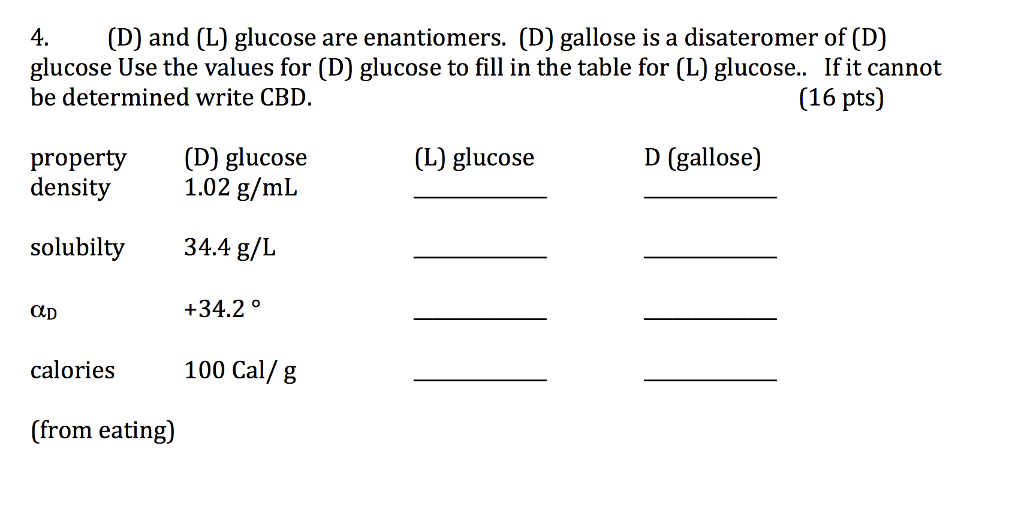
Solved (D) and (L) glucose are enantiomers. (D) gallose is a
There are three common naming conventions for specifying one of the two enantiomers (the absolute configuration) of a given chiral molecule: the R/S system is based on the geometry of the molecule; the (+)- and (−)- system (also written using the obsolete equivalents d- and l-) is based on its optical rotation properties; and the D/L system is based on the molecule's relationship to.
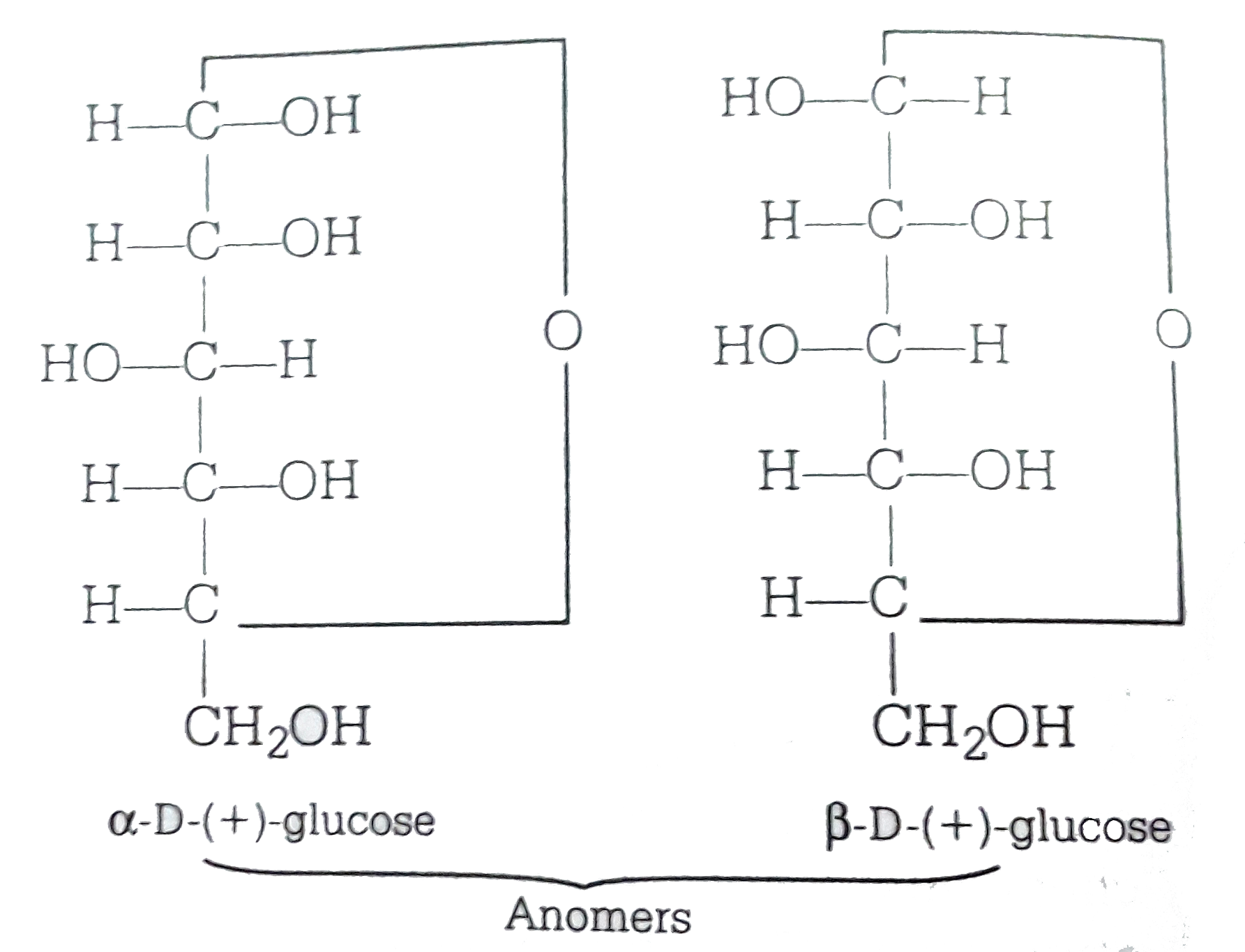
Alpha D Glucose and Beta D Glucose Are Enantiomers
Enzyme-free substrate is used for SERS sensing glucose enantiomers. • Au NPs play as the oxidase mimics instead of the SERS substrate. • Intrinsic structure of MOFs is favorable for applying as nanoreactors. • Enantioselective identification is achieved via onsite growth of Prussian blue. • This platform is also useful for other.

Epimers and Anomers Chemistry Steps
There are two enantiomers of glucose, called D-glucose and L-glucose. The D-enantiomer is the common sugar that our bodies use for energy. It has n = 4 stereocenters, so therefore there are 2 n = 2 4 = 16 possible stereoisomers (including D-glucose itself). In L-glucose, all of the stereocenters are inverted relative to D-glucose. That leaves.
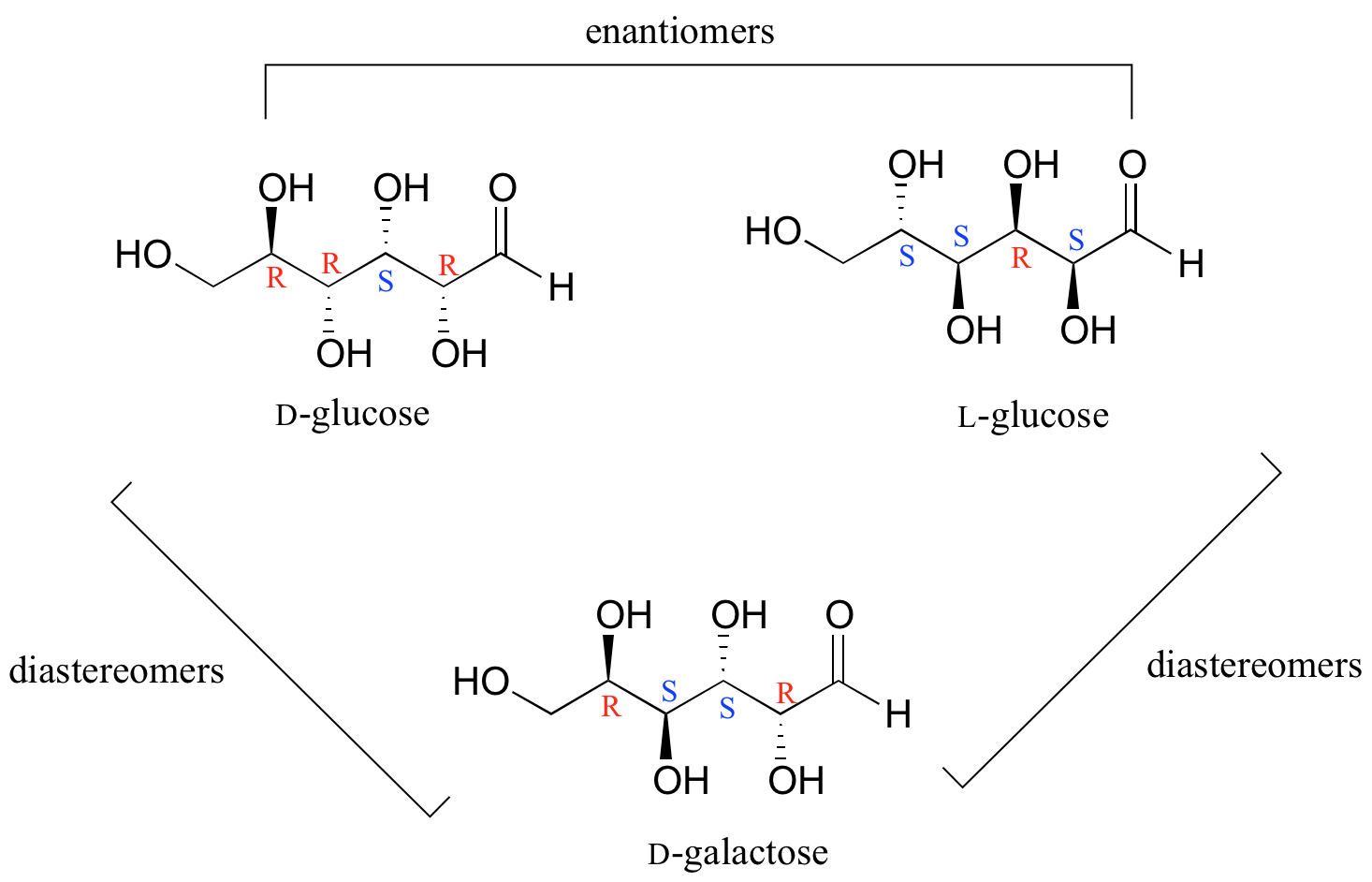
5.8 Diastereomers Chemistry LibreTexts
For example, let's consider the glucose molecule in its open-chain form (recall that many sugar molecules can exist in either an open-chain or a cyclic form). There are two enantiomers of glucose, called D-glucose and L-glucose. The D-enantiomer is the common sugar that our bodies use for energy. It has n = 4 stereocenters, so therefore.
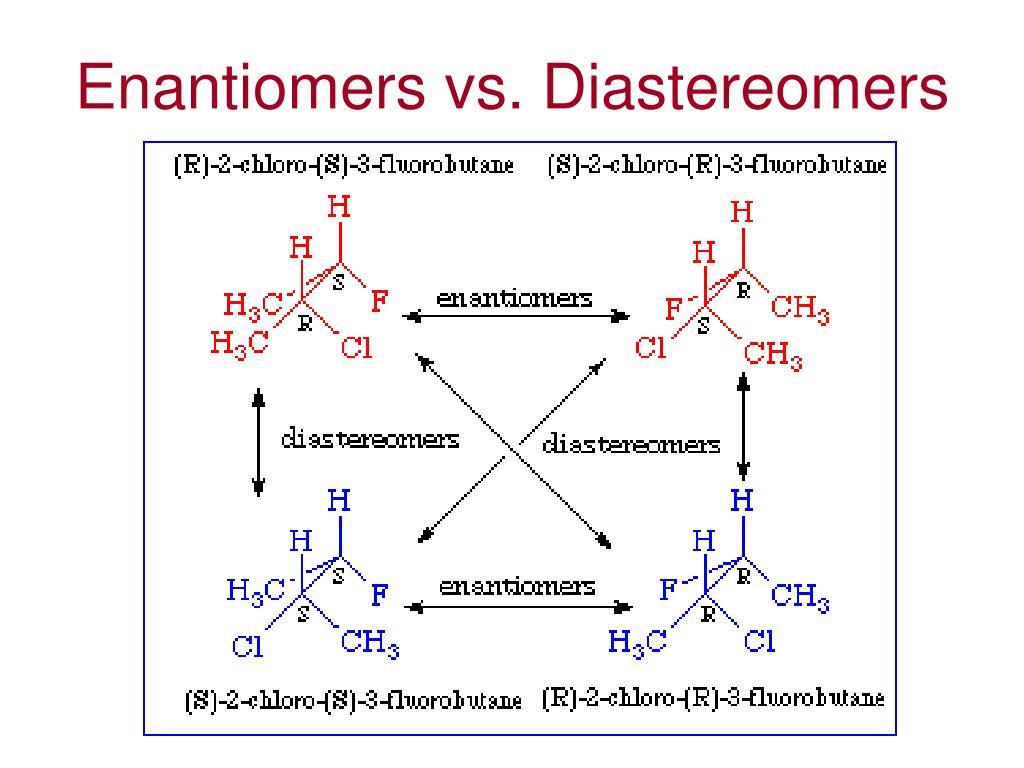
PPT Isomerism Recap PowerPoint Presentation, free download ID397852
Enantiomers of glucose. The enantiomer of lactic Acid. Nomenclature for enantiomers. The absolute configuration of enantiomers can be explained by using: D/L nomenclature system; R/S nomenclature system; D/L system. Although D/L is an old system of nomenclature but still most widely used for amino acids and carbohydrates. In order to determine.

D and LGlucose are enantiomers. Chemistry, Chemistry notes, Science chemistry
The confusion about D and L arises because the L sugars of a given name (glucose, for example) are mirror images of the D sugars of the same name. This concept is most easily seen with glyceraldehyde. In the same way D- and L- glyceraldehyde represent two enantiomers, the D- and L- forms larger monosaccharides are enantiomers of one another.
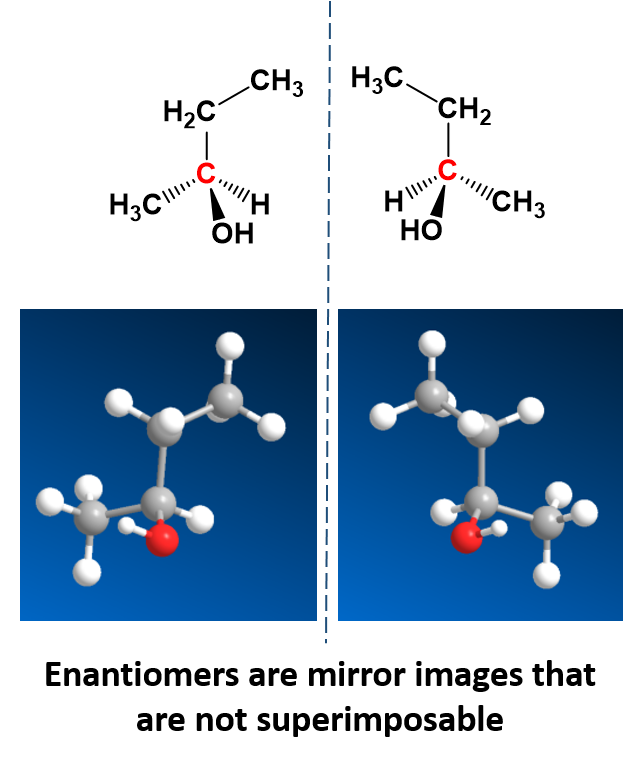
CH105 Chapter 5 Introduction to Organic Chemistry Chemistry
The D-enantiomer is the common sugar that our bodies use for energy. It has n = 4 stereocenters, so therefore there are 2 n = 2 4 = 16 possible stereoisomers (including D-glucose itself). In L-glucose, all of the stereocenters are inverted relative to D-glucose. That leaves 14 diastereomers of D-glucose: these are molecules in which at least.

CH103 Chapter 6 Natural Products and Organic Chemistry Chemistry
Enantiomers are a pair of molecules that exist in two forms that can not be superimposed on each other but are mirror images of each other. They have a chiral carbon which is a center of carbon.

Enantiomers vs Diastereomers What are Enantiomers? Video & Lesson Transcript
l -Glucose does not occur naturally in living organisms, but can be synthesized in the laboratory. l -Glucose is indistinguishable in taste from d -glucose, [1] but cannot be used by living organisms as a source of energy because it cannot be phosphorylated by hexokinase, the first enzyme in the glycolysis pathway.
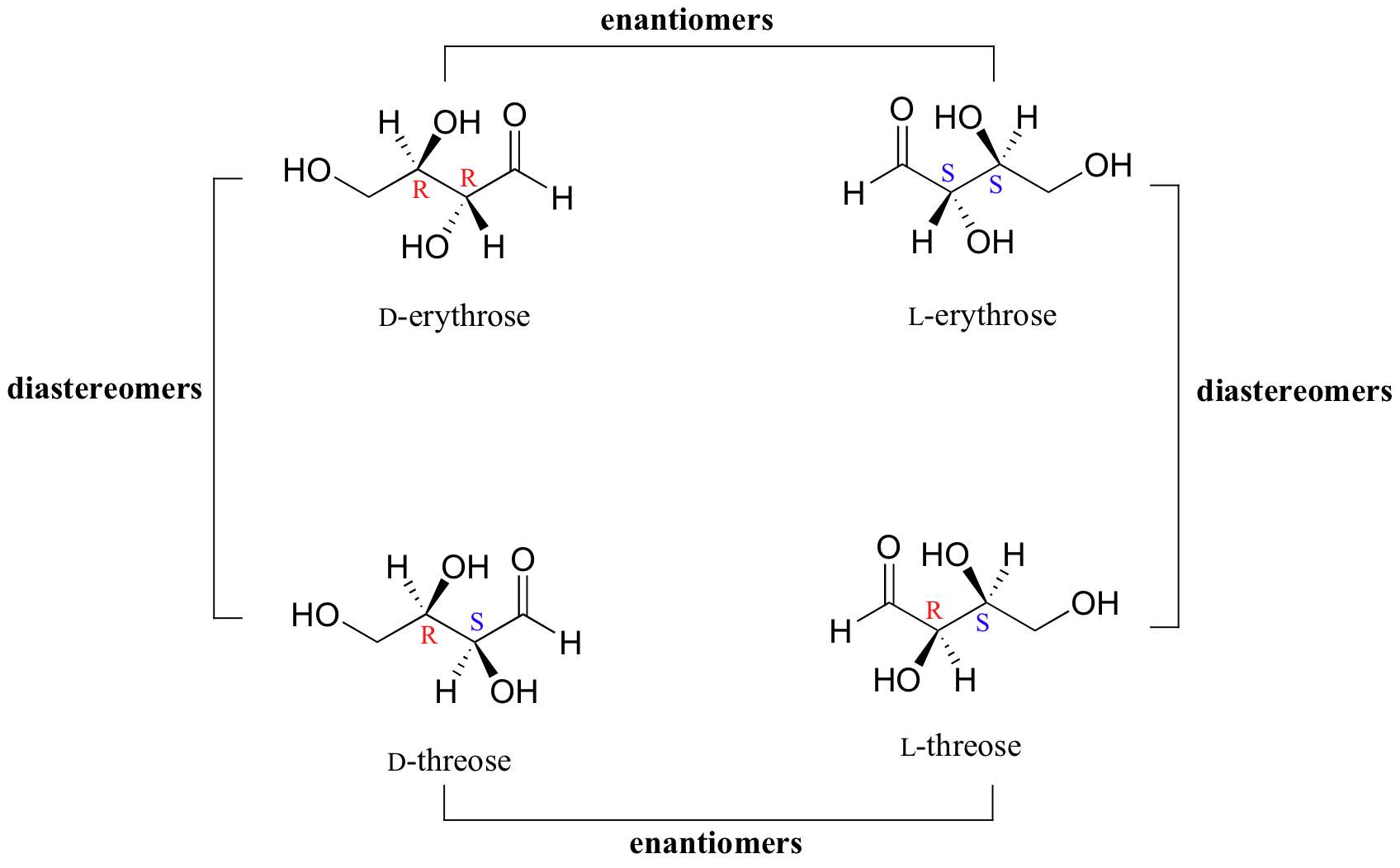
Chirality and Stereoisomers Chemistry LibreTexts
The Epimers of glucose involve some formations, some examples are starch, glycogen, glucose, polysaccharides, and oligosaccharides. The stereoisomers β-D-mannopyranose and β-D-glucopyranose are known as epimers because they differ only in the C-2 position of stereochemistry. The hydroxyl group in the β-D-glucopyranose molecule is equatorial.
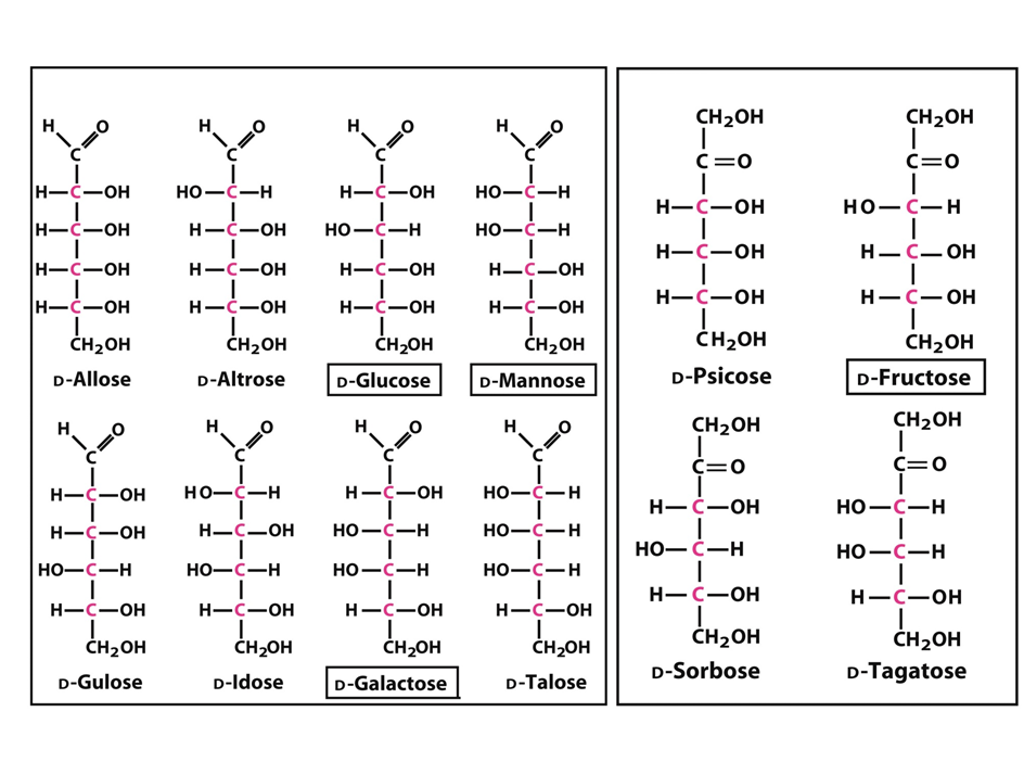
Solved CH2OH CH2OH HCOH HCOH HCOH CH2OH DAltrose
Therefore, D and L Glucose are enantiomers, while ɑ-D-glucose and β-D-glucose are diastereomers. To summarize what we learned about epimers and anomers Epimers are diastereomers that differ in the configuration of only one chiral center. Anomers are epimers specifically applied to characterize cyclic carbohydrates.

SOLVEDαDglucose and βDglucose are (a) anomers (b) C2 epimers (c) C3 epimers (d) enantiomers
1 Answer Maxwell Aug 12, 2016 They are not enantiomers. They are diastereomers. Explanation: Diastereomers are molecules that have 2 or more stereogenic centers and differ at some of these centers with respect to absolute configurations. This disqualifies them from being mirror images of each other.

ɑDglucoses and βDglucose are anomersdiastereomers that differ in only one chiral center D
There are two enantiomers of glucose, called D-glucose and L-glucose. The D-enantiomer is the common sugar that our bodies use for energy. It has n = 4 stereocenters, so therefore there are 2 n = 2 4 = 16 possible stereoisomers (including D-glucose itself). In L-glucose, all of the stereocenters are inverted relative to D-glucose. That leaves.